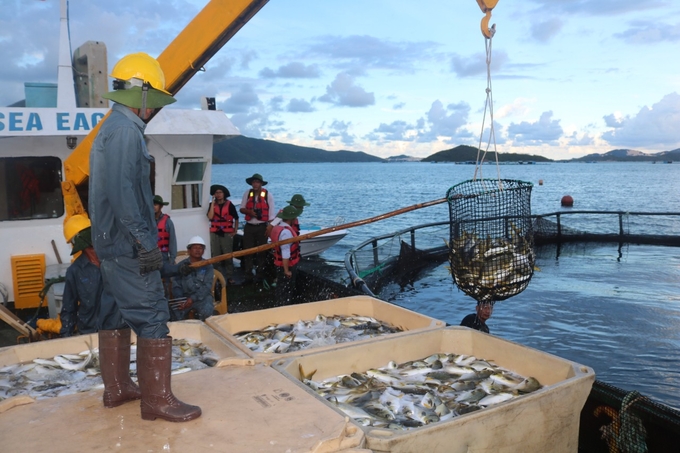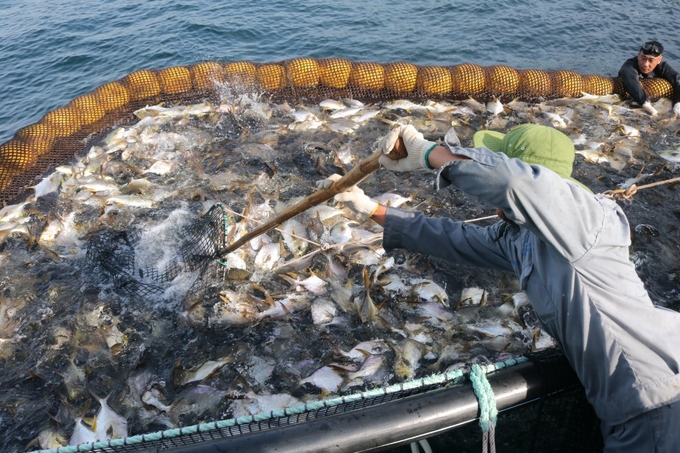The potential of marine agriculture in relation to tourism
Currently, in our country, the model of marine aquaculture related to tourism is quite new, in some places still primitive. Sea farms are mostly chosen as a stopover for eating and drinking with fresh fish dishes. We lack pilot schemes, scientific research and evaluation, and proper guidelines and regulations for establishing sea farms for tourism. Infrastructure is not synchronized and not safe for marine farm recreational activities.

Vietnam has many advantages in developing marine aquaculture combined with tourism. Picture: KS
Vietnam has a coastline of more than 3,260 km with many bays, bays, lagoons and thousands of large and small islands scattered in the coastal area from Quang Ninh to Kien Giang. The islands not only protect against wind and storms, which is beneficial for sea fishing, but also create beautiful scenery that not all countries have.
With such unique natural conditions, the combination of marine aquaculture and tourism development to take advantage of natural benefits and vast water surface potential deserves attention. Moreover, in order to minimize disputes in the use of natural resources between tourism and aquaculture in general, the combination of marine aquaculture and tourism can be considered as one of the solutions that should be considered.
Development direction and solution
There are many different models of aquaculture along the coast of our country. Breeding objects such as crustaceans, mollusks, marine fish and algae are also quite rich and varied. Many aquatic creatures have interesting shapes and beautiful colors and attract onlookers. Each region has endemic species and unique farming methods.

Khanh Hoa has many beautiful islands and bays, which is beneficial for the development of sea agriculture combined with tourism. Picture: KS
In Quang Ninh and Hai Phong, cage farming of mollusks and marine fish is widespread. Lobster is mainly farmed in Khanh Hoa and Phu Yen. The pearl culture model is quite famous in Phu Quoc, Kien Giang. An interesting coincidence is that all three places, Quang Ninh, Khanh Hoa and Kien Giang, have favorable natural conditions for the development of marine aquaculture and are famous tourist centers of the country and the world. Areas, especially maritime and island tourism.
The integration of mariculture into tourism should be focused on the development of sports, entertainment, educational and cultural tourism, and not on resort tourism. Tourism programs at the sea farm can be combined with environmental protection and marine life education, ecosystem protection awareness, coral reef protection awareness or fishing activities. Entertainment, diving with him to see farmed fish, visiting marine farm systems, learning about local people’s livelihood models…
In order for the development of marine aquaculture, combined with tourism, to become an industry and increase people’s income, an integrated approach based on a number of solutions is required:
The first is to refer to the models of sea farming combined with tourism in countries around the world and apply them to Vietnam’s conditions.
Second, there is a need for pilot models that can be used to assess socio-economic efficiency and environmental and environmental impacts. Tourism and mariculture interact both positively and negatively. Sea farming requires good water quality, while tourism carries a risk of pollution.

The combination of marine aquaculture and tourism requires pilot models for a comprehensive assessment. Picture: KS
The third is to build and maintain marine aquaculture ecosystems to protect biodiversity and harness the value of aquaculture systems and natural landscapes.
Fourth, there is a need to equip seafarers with knowledge and skills to engage in tourism, and fifth, a national master plan is needed. The planning work needs to go a step further by examining, evaluating and indicating which areas are earmarked for mariculture, which for tourism and which for the tourism-mariculture combination model.
Many challenges
Marine pollution is a major problem worldwide. Vietnam faces pollution of the marine environment, especially in the coastal areas. The sea aquaculture cage system is dense and congested, resulting in increased environmental pollution. When tourism activities flourish on sea farms, the ecosystem and environment are more or less negatively impacted.
Sewage, waste from tourists, from passenger ships and from untreated marine farms are dumped into the sea, causing pollution, degrading ecosystems and harming marine life. In the long term, they degrade the beauty of the natural landscape and pollute coastal communities. Another problem is eutrophication with extremely high concentrations of nutrients such as nitrogen and phosphorus in a body of water.

Sea farming coupled with tourism development presents many challenges that need to be addressed. Picture: KS
This leads to algal blooms, particularly some toxic algae that can be harmful to marine life. When algae cover a large surface of a body of water, sunlight is blocked and plants below the surface are deprived of light, leading to their death.
Without aquatic plants, there is no natural filtration system to facilitate the absorption of toxic chemicals from wastewater, and biodiversity begins to disappear. Untreated wastewater can also carry pathogens into the oceans, affecting not only the ecosystem but also spreading to caged aquatic animals.
When tourists, especially international visitors, visit marine aquaculture systems, national security and technological security must also be considered. These are scenarios that are not too far away if we align the development of a tourism model in combination with marine aquaculture.
Therefore, when licensing the model of mariculture combined with tourism, managers and policy makers must consider and comply with specific and strict regulations to protect the marine environment and ecosystem for a green future of future generations.

